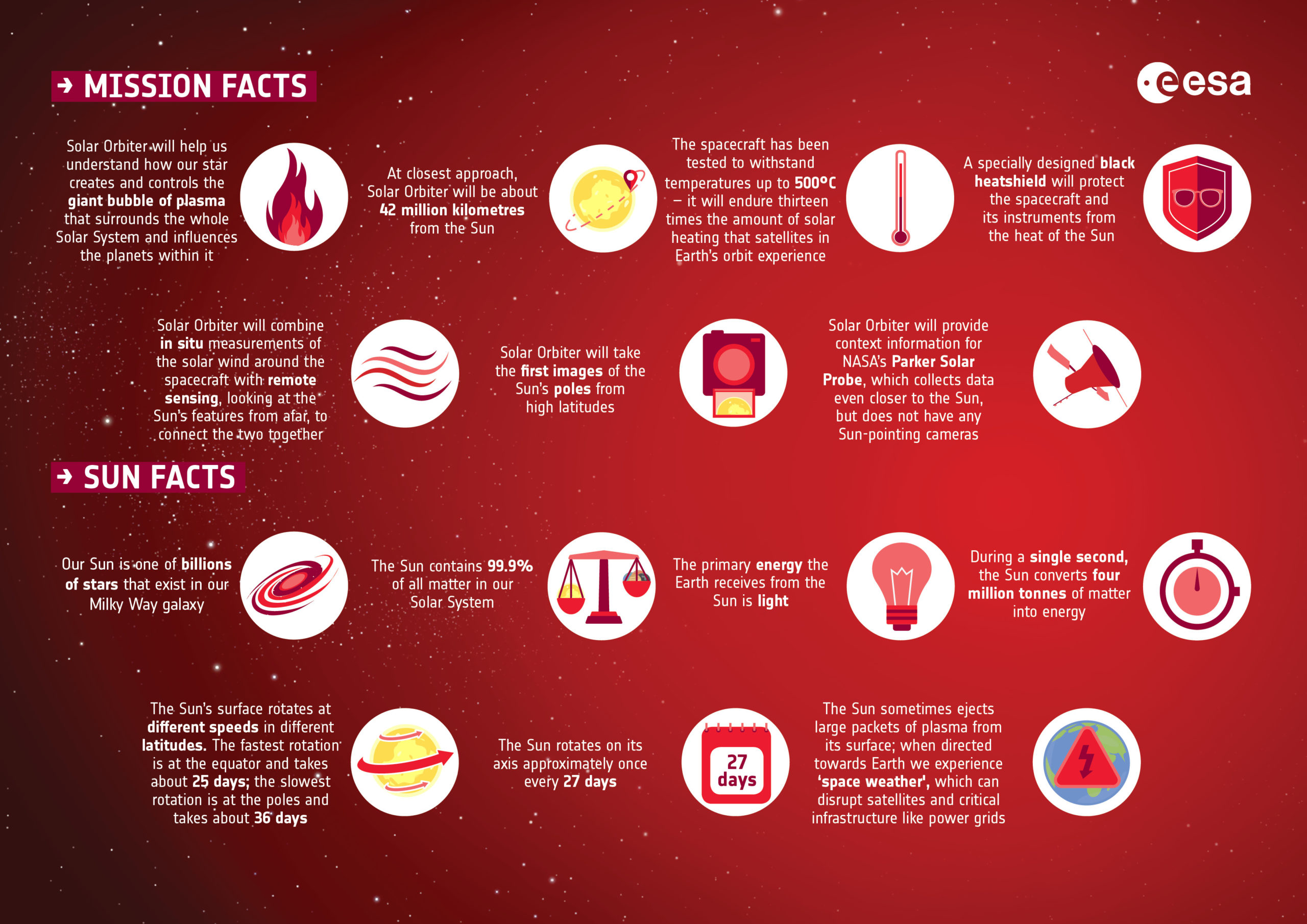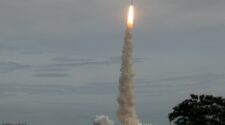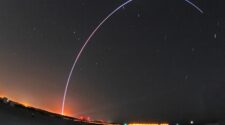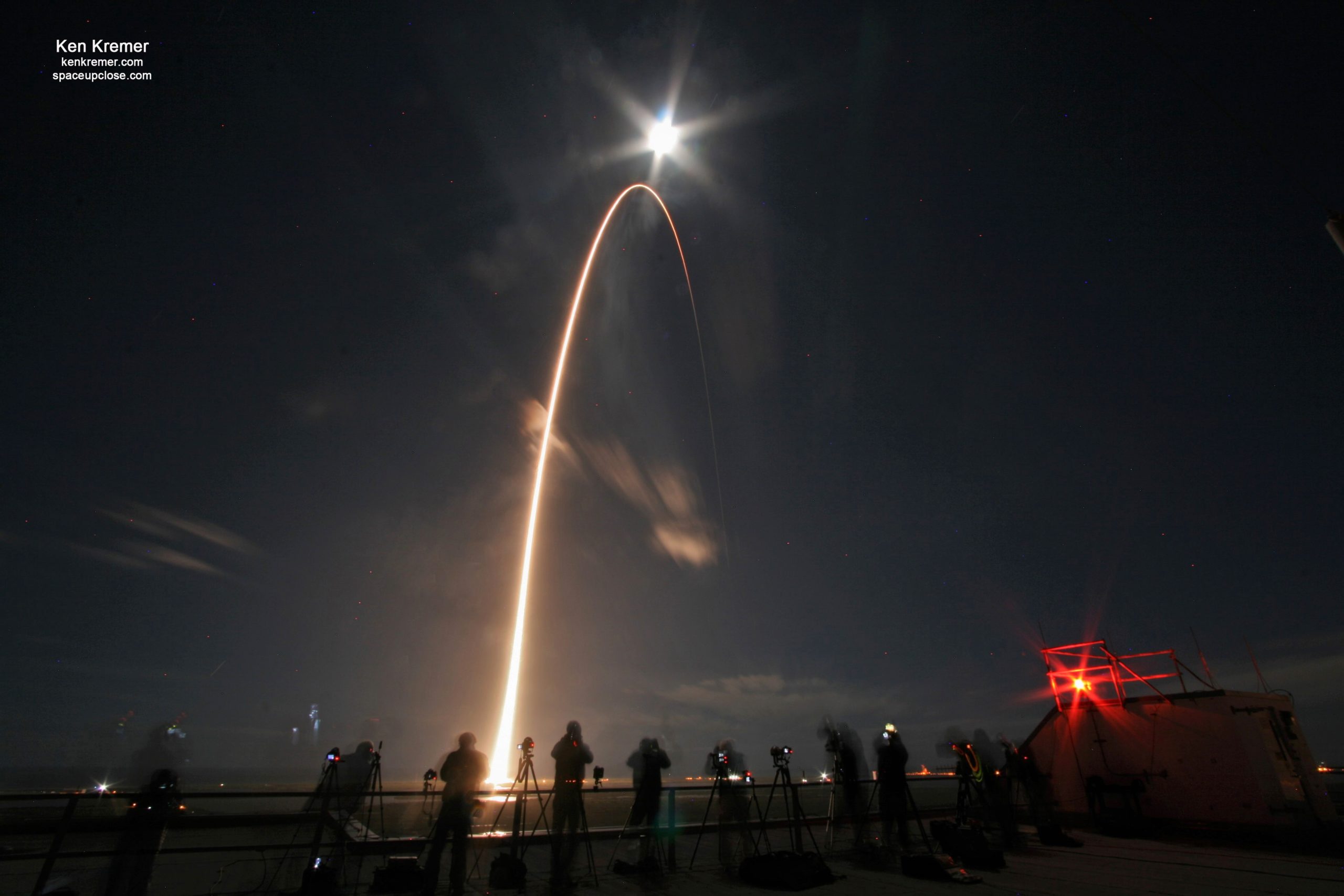
The Solar Orbiter collaborative mission between ESA (European Space Agency) and NASA to study the Sun, its poles, and space weather in unprecedented detail, streaked to space on a commercial United Launch Alliance Atlas V rocket this past weekend from the a rocket range along the Florida coastline.
The Solar Orbiter mission started with an on-time blastoff at 11:03 p.m. EST Sunday, Feb. 9 from Space Launch Complex 41 on Cape Canaveral Space Force Station, Florida. The spacecraft was confirmed to be healthy nearly an hour and a half later at 12:24 a.m. when mission controllers at the European Space Operations Centre (ESOC) in Darmstadt, Germany, received a signal from the spacecraft indicating that its life-giving solar panels had successfully deployed.
The international Solar Orbiter is the first mission designed to image and explore the Sun’s polar regions thereby offering unprecedented science returns on basic understandings of how the Sun works and better predictions of space weather events that impact everyday life on Earth and our astronauts living aboard the International Space Station (ISS).
After being assembled and tested in Europe, the 1750 kg Solar Orbiter spacecraft arrived in Florida back in November, where it underwent prelaunch testing and then was encapsulated in a four-meter fairing. After being mounted atop the Atlas V rocket, the entire stack was then rolled out the launch pad for the weekend night launch.
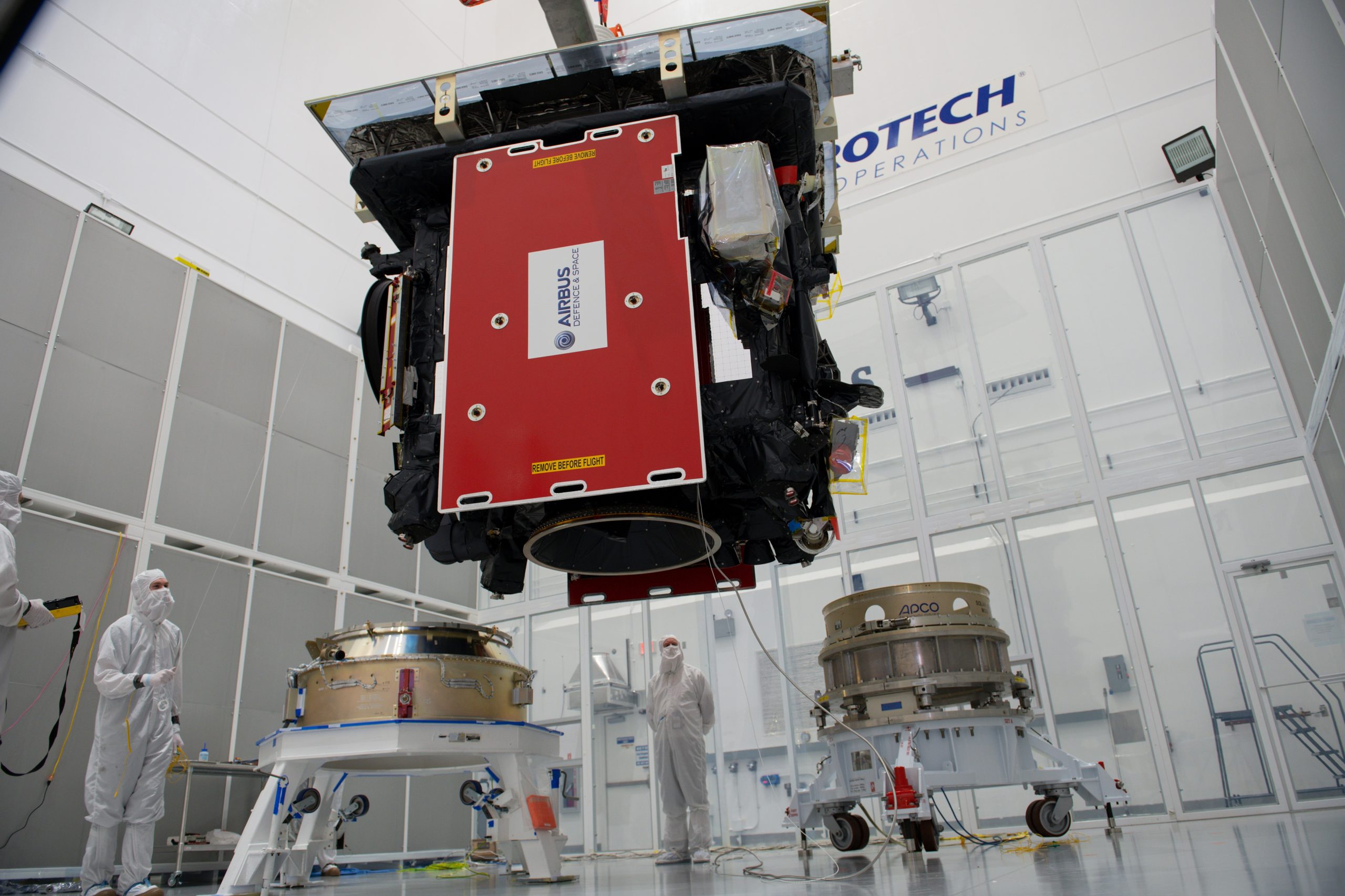
In the first two days after launch, Solar Orbiter will deploy its instrument boom and several antennas that will communicate with Earth and gather scientific data. Solar Orbiter is on a unique trajectory that will allow its comprehensive set of instruments to provide humanity with the first-ever images of the Sun’s poles. This trajectory includes 22 close approaches to the Sun, bringing the spacecraft within the orbit of Mercury to study the Sun and its influence on space.
At the closest approach, Solar Orbiter will be about approximately 26 million miles (42 million km) from the Sun. It will reach an inclination of around 24 degrees and then in future orbits as much as 32 degrees.
“As humans, we have always been familiar with the importance of the Sun to life on Earth, observing it and investigating how it works in detail, but we have also long known it has the potential to disrupt everyday life should we be in the firing line of a powerful solar storm,” said Günther Hasinger, ESA director of Science. “By the end of our Solar Orbiter mission, we will know more about the hidden force responsible for the Sun’s changing behavior and its influence on our home planet than ever before.”
Solar Orbiter will spend about three months in its commissioning phase, during which the mission team will run checks on the spacecraft’s 10 scientific instruments to ensure they are working properly. It will take Solar Orbiter about two years to reach its primary science orbit.
Solar Orbiter combines two main modes of study. In-situ instruments will measure the environment around the spacecraft, detecting such things as electric and magnetic fields and passing particles and waves. The remote-sensing instruments will image the Sun from afar, along with its atmosphere and its outflow of material, collecting data that will help scientists understand the Sun’s inner workings.
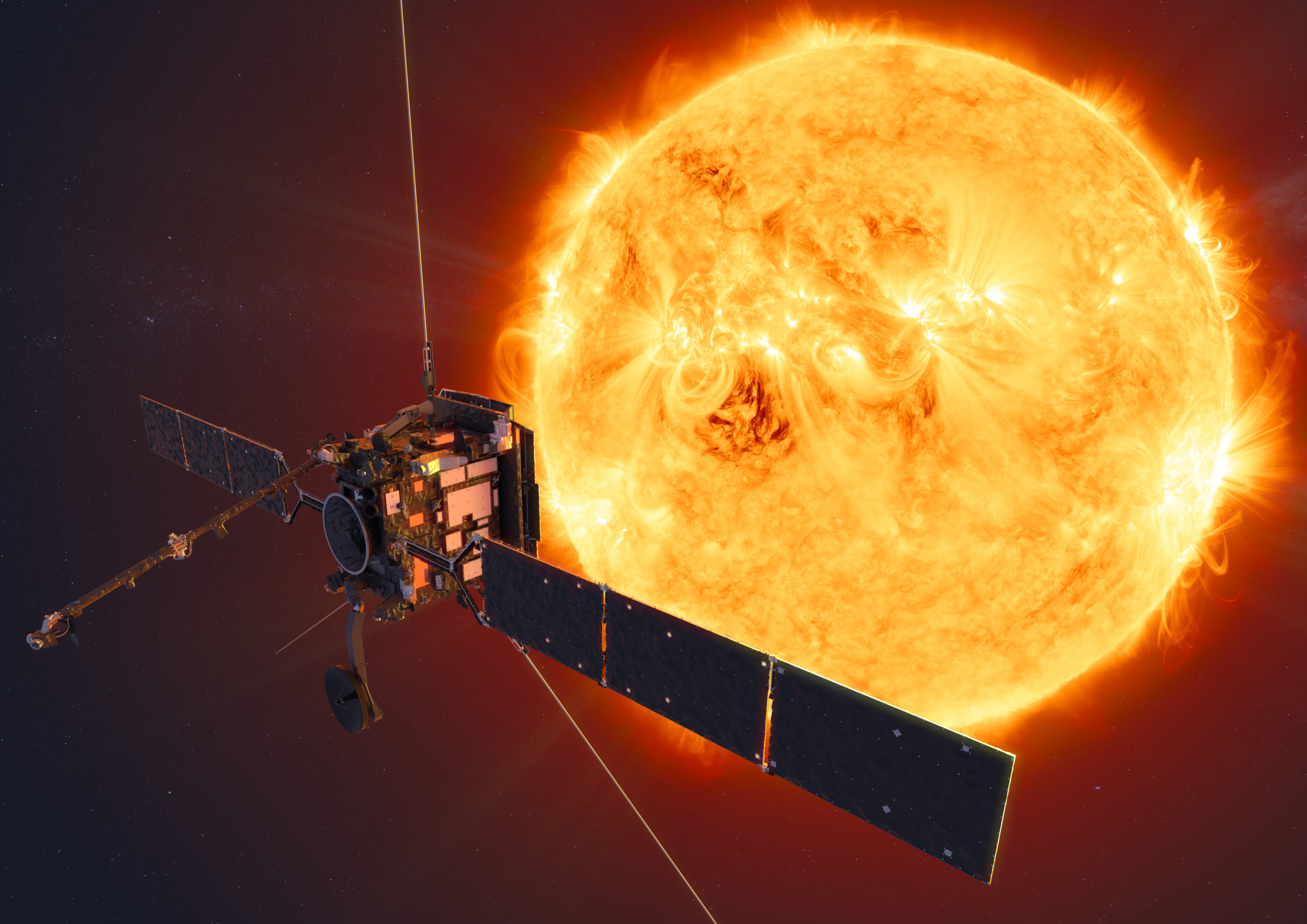
Facts about our Sun
• The Sun contains 99.9 percent of all matter in our Solar System
• We live in the extended atmosphere of the Sun, a region of space known as the heliosphere
• The primary energy the Earth receives from the Sun is light
• During a single second, the Sun converts four million tonnes of matter into energy
• The Sun rotates on its axis approximately once every 27 days
• The Sun’s surface rotates at different speeds in different latitudes. The fastest rotation is at the equator and takes about 25 days; the slowest rotation is at the poles and takes about 36 days
• The Sun sometimes ejects large packets of plasma from its surface; when directed towards Earth we experience ‘space weather’ which can disrupt satellites and critical infrastructure like power grids
During the mission’s cruise phase, which lasts until November 2021, the spacecraft’s in-situ instruments will gather scientific data about the environment around the spacecraft, while the remote-sensing telescopes will focus on calibration to prepare for science operations near the Sun. The cruise phase includes three gravity assists that Solar Orbiter will use to draw its orbit closer to the Sun: two past Venus in December 2020 and August 2021, and one past Earth in November 2021.
Following its Earth gravity assist, Solar Orbiter will begin the primary phase of its mission – leading up to its first close pass by the Sun in 2022 – at about a third the distance from the Sun to Earth. Throughout its mission, Solar Orbiter will use successive Venus gravity assists to draw its orbit closer to the Sun and lift it out of the ecliptic plane.
Solar Orbiter’s unique orbit will bring the spacecraft out of the plane that roughly aligns with the Sun’s equator where Earth and the other planets orbit. Spacecraft launched from Earth naturally stay in this plane, which means that telescopes on Earth and telescopes on satellites have limited views of the Sun’s north and south poles.
A previous ESA-NASA mission, Ulysses, launched in 1990, achieved an inclined orbit giving scientists their first measurements of the space around the Sun in this critical region. Unlike Ulysses, Solar Orbiter carries cameras that will provide the first-ever images of the Sun’s poles. This vital information will help scientists fill in the gaps in models of the Sun’s magnetic field, which drives the Sun’s activity.
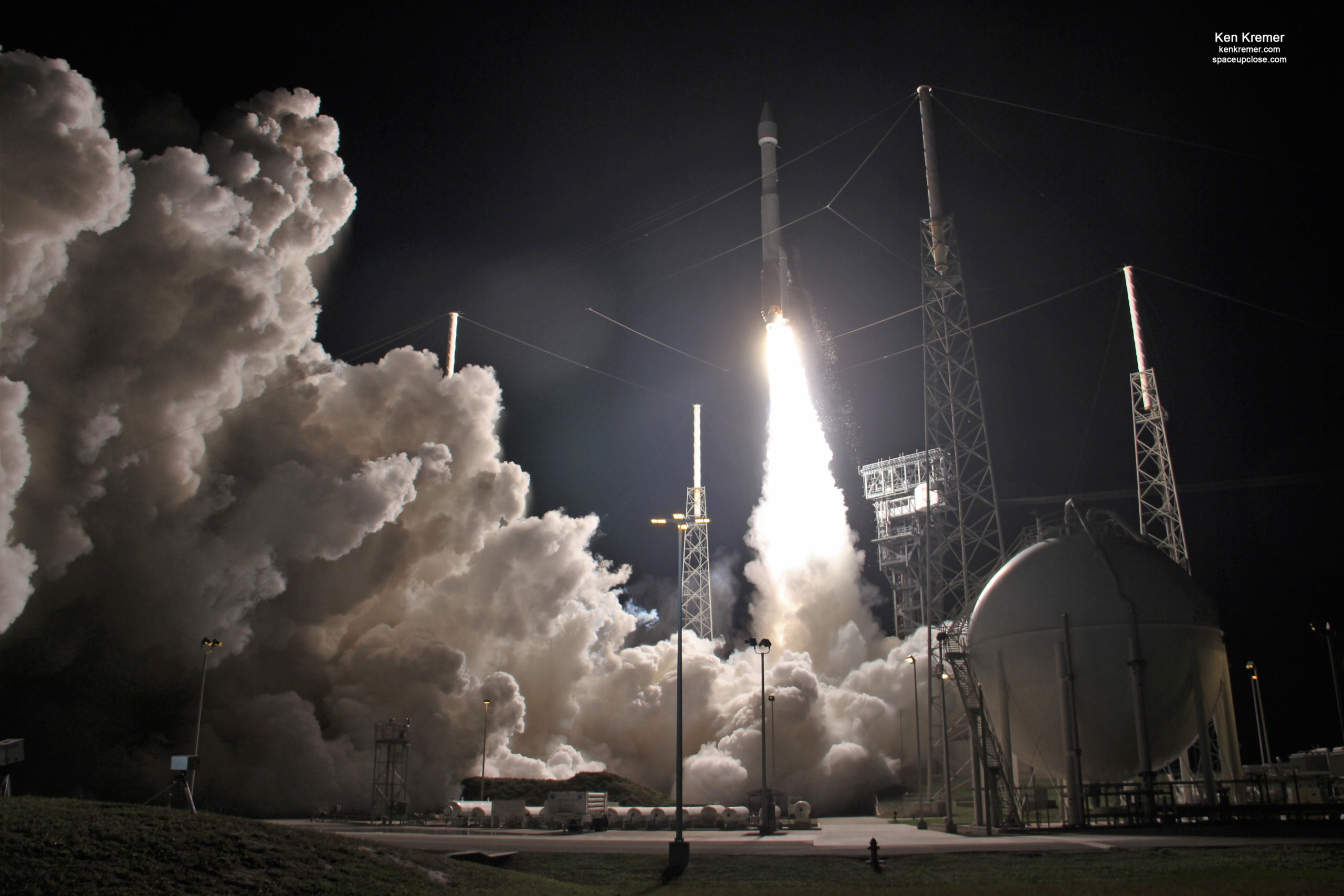
“Solar Orbiter is going to do amazing things. Combined with the other recently launched NASA missions to study the Sun, we are gaining unprecedented new knowledge about our star,” said Thomas Zurbuchen, NASA’s associate administrator for Science at the agency’s headquarters in Washington. “Together with our European partners, we’re entering a new era of heliophysics that will transform the study of the Sun and help make astronauts safer as they travel on Artemis program missions to the Moon.”
ESA’s European Space Research and Technology Centre in the Netherlands manages the development effort. The European Space Operations Center in Germany will operate Solar Orbiter after launch. Solar Orbiter was built by Airbus Defense and Space. The spacecraft contains 10 instruments. Nine were provided by ESA member states and ESA. NASA provided one instrument, the Solar Orbiter Heliospheric Imager (SoloHI), and an additional sensor, the Heavy Ion Sensor, which is part of the Solar Wind Analyzer instrument suite.
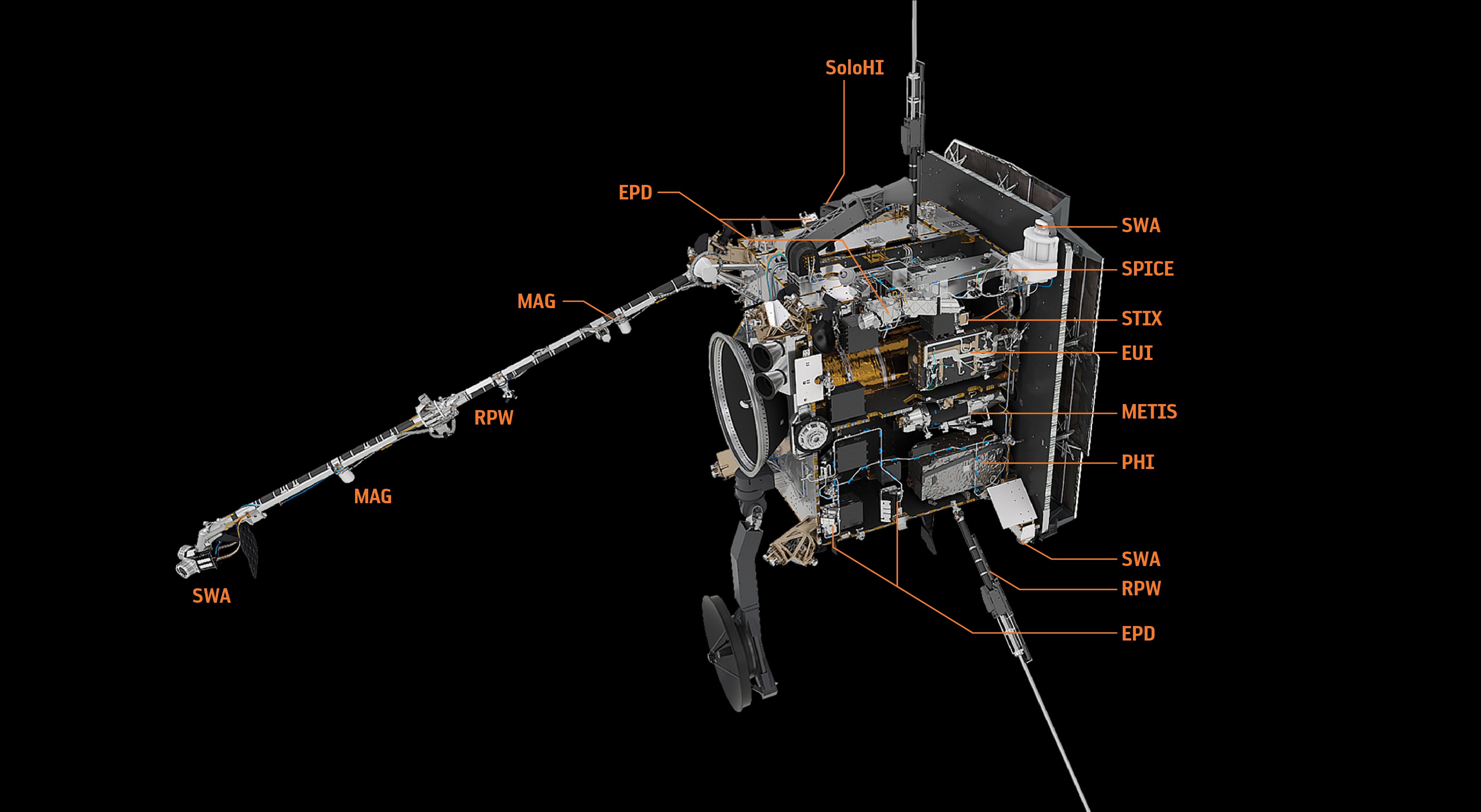
Solar Orbiter’s science instruments
• EUI: Extreme Ultraviolet Imager – PI: Pierre Rochus, Centre Spatial de Liège, Belgium
• MAG: Magnetometer– PI: Tim Horbury, Imperial College London, United Kingdom
• Metis: Coronagraph – PI: Marco Romoli, INAF – University of Florence, Italy
• PHI: Polarimetric and Helioseismic Imager – PI: Sami Solanki, Max-Planck-Institut für Sonnensystemforschung, Germany
• RPW: Radio and Plasma Waves– PI: Milan Maksimovic, LESIA, Observatoire de Paris, France
• SoloHI: Heliospheric Imager – PI: Russell A. Howard, US Naval Research Laboratory, Washington, D.C., USA
• SPICE: Spectral Imaging of the Coronal Environment – European-led facility instrument
• STIX: X-ray Spectrometer/Telescope – PI: Säm Krucker, FHNW, Windisch, Switzerland
• SWA: Solar Wind Plasma Analyser – PI: Christopher Owen, Mullard Space Science Laboratory, United Kingdom
Solar Orbiter is an ESA mission with strong NASA participation. The prime contractor is Airbus Defence and Space in Stevenage, UK. In all, space agencies, corporations and universities from 18 countries – Norway, United Kingdom, Ireland, The Netherlands, Belgium, France, Portugal, Spain, Finland, Sweden, Denmark, Germany, Poland, Czech Republic, Austria, Switzerland, Italy and the United States – contributed to the development of the spacecraft.
The mission will provide complementary datasets to NASA’s Parker Solar Probe that will allow more science to be distilled from the two missions than either could achieve on their own. The two spacecraft together will revolutionize our understanding of our nearest star.
